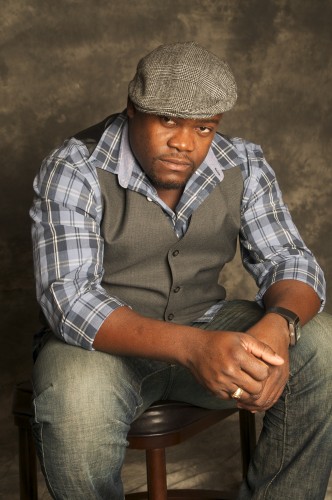10 Reggae Chord Progressions pdf |
Easy Blues Guitar ScalesIrrespective of the musical genre you play, blues guitar scales should form part of your musical arsenal. I play reggae guitar and find blues guitar scales to be an invaluable part of my musical repertoire. It is very important for the reggae guitar sound. In this article we will look at the three main blues guitar scales and some very interesting arpeggios.
1. The first blues guitar scale is
obviously the minor pentatonic. An example is shown below in the key of A (remember the minor pentatonic can be
used over a minor or major blues chord). As a result the blues scale is commonly used and is shown below as well. Notice that the E note is replaced by Eb in the blues scale, which is known as the blue note. The minor pentatonic blues guitar scale has five notes. This is good as there aren't too many notes and your riffs or runs can start on any of the notes to avoid boredom. A mixture of five note runs combined with slides, hammer-ons, chromatics, etc, will do your soloing no end of good. The same can be applied to the blues scale.
A minor pentatonic scale E|--------------------------------5--8-- B|--------------------------5--8-------- G|--------------------5--7-------------- D|--------------5--7-------------------- A|--------5--7-------------------------- E|--5--8--------------------------------
A blues scale E|----------------------------------5--8----- B|-------------------------------8----------- G|----------------------5--7--8-------------- D|----------------5--7----------------------- A|----------5--6----------------------------- E|----5--8-----------------------------------
2. The second most popular blues guitar scale is the major pentatonic. An example is shown below in the key of C. It's not the only blues guitar scale used by BB king, Stevie Ray Vaughan and others but when they do, it's done with great effect. Again its five notes and to get the most out of it, use slides and chromatic runs to add interest. In terms of music theory the major pentatonic is the same as the minor pentatonic blues guitar scale for the relative minor chord to the major key that you are in. So if you are in C major, you can use the A minor pentatonic to bring out some interesting ideas. The aim here is to think in terms of minor and not major to get the best effect. Remember A minor is related to C major.
C major pentatonic scale E|----------------------------------5--8-- B|----------------------------5--8-------- G|----------------------5--7-------------- D|----------------5--7-------------------- A|----------5--7-------------------------- E|----5--8--------------------------------
Yes, it's the same as the A minor pentatonic blues guitar scale but the key is to start on the C note or emphasize the C chord tones.
3. The third blues guitar scale is the mixolydian. An example is shown below in the key of A. It's used very often by jazz musicians and was used quite a bit by Stevie Ray Vaughan. The beauty of this scale is that it has notes outside of the scale related to the key you are in, which when used creates musical dissonance, which is then resolved by a chord tone. It is important not to dwell on these outside notes too long as doing so could compromise the melody. The best way to use it is to deliberately target the chord tones of the key that you are in by sliding in and out of notes, using chromatic runs and bends.
A mixolydian scale E|----------------------------------------------5--7-- B|-------------------------------------5--7--8-------- G|----------------------------4--6--7----------------- D|-------------------4--5--7-------------------------- A|----------4--5--7----------------------------------- E|----5--7--------------------------------------------
4. Arpeggios aren't necessarily blues guitar scales but can add instant sweetness to your playing. The reason for this is simply because arpeggios only use the notes that make up the chord. Some musicians call it the fluid chord. An example of an A dominant 7th and A minor 7th arpeggios are shown below.
A dominant 7th arpeggio E|--------------------------------9----- B|-------------------------8--10-------- G|-------------------6--9--------------- D|-------------5--7--------------------- A|-------4--7--------------------------- E|----5--------------------------------- A minor 7th arpeggio E|----------------------------5--8----- B|----------------------5--8----------- G|-------------------5----------------- D|-------------5--7-------------------- A|----------7-------------------------- E|----5--8-----------------------------
To play blues you really only need to know your dominant 7th and minor 7th arpeggios. But, I will go a little further, I have discovered that you can actually use the minor 9th arpeggio over a dominant 7th chord for some really interesting and profound sounds. The shape I use over A dominant 7th is shown below. Enjoy! For more on blues scales for reggae bass
A minor 9th arpeggio E|----------------------------------5--7--8----- B|----------------------------5--8-------------- G|----------------------4--5-------------------- D|----------------5--7-------------------------- A|-------------7-------------------------------- E|----5--7--8-----------------------------------
|
| HOW TO PlAY REGGAE
HOW TO PLAY SKA
TYPES OF REGGAE
|
Copyright 2009-2018 How-To-Play-Reggae.com. All rights reserved. No reproduction permitted without permission.

 It is the most popular of all the blues guitar scales and for this
reason using it can become a little monotonous at times.
It is the most popular of all the blues guitar scales and for this
reason using it can become a little monotonous at times.  Delicious
Delicious Twitter
Twitter Technorati
Technorati Stumbleupon
Stumbleupon Facebook
Facebook Digg
Digg